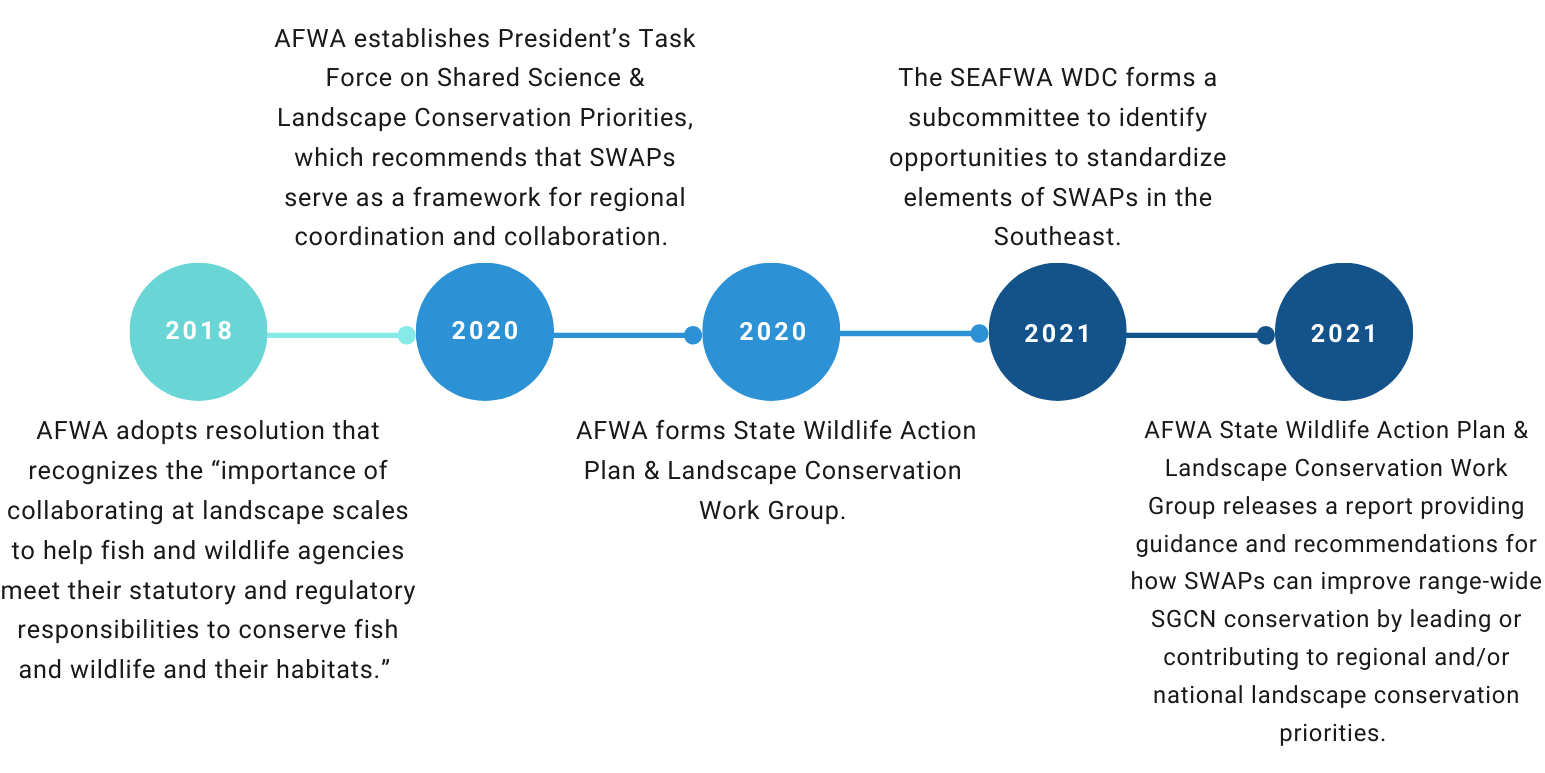Summary of SWAP alignment survey results

If you want to know how Southeastern states or territories approach their State Wildlife Action Plans (SWAPs)—what tools and resources they use, what elements they find most challenging—click here to find out! SECAS staff work to clear barriers to conservation actions across jurisdictional boundaries and have been working with the Southeastern Association of Fish and Wildlife Agencies (SEAFWA) Wildlife Diversity Committee (WDC) to develop potential opportunities to align State Wildlife Action Plans (SWAPs) in the Southeast. You can check out some of my previous blogs that describe this effort and share the raw results of the survey.
To help share some of the lessons learned, the biggest challenges in revising SWAPs, common tools and resources used to inform SWAPs, and potential areas of alignment, the WDC has written a summary analysis of the survey. This summary collates and provides context for the survey results and the WDC’s efforts. It’s also a quick and easy read for those who don’t want to dive into a long report.
SECAS staff will continue to work with the WDC and the states to help meet the guidance and recommendations from the Association of Fish and Wildlife Agencies (AFWA) President’s Task Force on Shared Science & Landscape Conservation Priorities and the AFWA State Wildlife Action Plan & Landscape Conservation Work Group. The WDC, the AWFA Task Force, and the AFWA Work Group, and SECAS recognize that aligning SWAPs is an efficient and effective way to support cross-jurisdictional conservation actions and sustain our Species of Greatest Conservation Need.
To get involved with the WDC’s efforts to develop recommendations to align SWAPs, reach out to Allison Fowler. For more information about the results of the survey or for help using the Southeast Blueprint, contact Louise Vaughn.